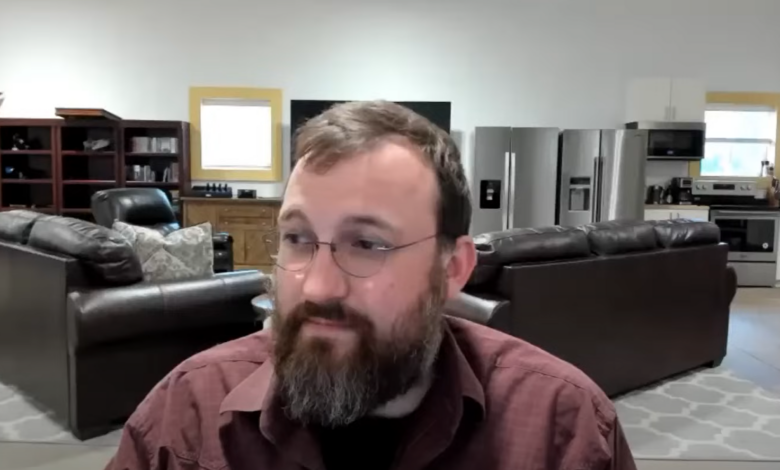
Cardano’s Path Forward: Governance Challenges and Strategic Partnerships
In a compelling livestream titled “Partnerships” on December 21, Charles Hoskinson, the visionary behind Cardano, delved into a myriad of questions surrounding the collaboration between Input Output (IO) and the Cardano Foundation (CF). Beyond addressing these concerns, he provided an in-depth perspective on the ecosystem’s trajectory. During the extensive session, Hoskinson addressed a poignant comment by Rick McCracken, a steadfast community member, covering topics such as on-chain governance and potential synergies with ecosystems like Polkadot, Hedera Hashgraph, and others.
Examining the Dynamics Between IO and the Cardano Foundation
The discussion was sparked by McCracken’s post on X, which raised concerns about whether ongoing disagreements between IO and the CF could threaten external alliances. McCracken questioned, “If Charles, Tam, and Fred can’t forge a lasting professional relationship between IOHK and the Cardano Foundation within the Cardano ecosystem, why should we expect them to establish enduring partnerships with entities outside the ecosystem?”
Hoskinson candidly responded, expressing his exasperation with what he described as a persistent “philosophical and fundamental difference” between the two organizations. Throughout the livestream, he underscored that these disputes largely center around the foundation’s governance model and its allocation of community funds, which he argues should be managed by the ecosystem rather than a secluded board.
“For three years, disagreements have persisted due to a philosophical and fundamental divergence between the Cardano Foundation and Input Output,” Hoskinson remarked. “Some disputes are worth engaging in because the ecosystem’s resources are controlled by individuals unaccountable to the community.”
Transparency and Accountability in Community Funds
One major sticking point, as Hoskinson noted, is the Cardano Foundation’s oversight of approximately $600 million in ecosystem funds. He emphasized that these resources are “the community’s money” and should be utilized with transparency and accountability.
“It’s $600 million of your money, my money, everybody’s money,” Hoskinson stressed. “That’s the philosophical issue, and for three years behind the scenes, our teams have been trying to resolve this.”
Hoskinson insisted that the conflicts over governance are not merely “petty differences.” Instead, he portrayed them as integral to Cardano’s decentralized identity and future, especially as the platform advances towards on-chain governance through CIP-1694, preparing for significant developments slated for 2025.
Cardano’s Strategic Partnerships on the Horizon
In spite of internal governance hurdles, Hoskinson emphasized that external collaborations remain strong. He highlighted ongoing discussions with various blockchain ecosystems such as Polkadot, Hedera Hashgraph, and Elrond (now MultiversX), as well as negotiations with major tech companies like Microsoft Azure.
“We have never had better opportunities as an ecosystem to form partnerships because the reality is we have outstanding technology,” he affirmed. “What are we doing with the Polkadot ecosystem, what are we doing with Elrond, what are we doing with Hedera Hashgraph? … We’re poised for some exciting announcements.”
Regarding Microsoft Azure, Hoskinson revealed, “I’m engaging with all the legacy players too, especially the big names. I recently had a meeting with Microsoft Azure as they are part of the Confidential Computing Consortium. This concept of merging this extensive infrastructure is a significant move for Midnight.”
The Promise of Midnight
Hoskinson spotlighted Midnight, an emerging Cardano-based protocol centered on data protection, privacy, and confidential computing, which he mentioned already has “95 partnerships” in the works.
Throughout the livestream, Hoskinson consistently highlighted the critical role of on-chain governance as the enduring mechanism to resolve disputes and guide Cardano’s evolution. He celebrated community-driven initiatives like Intersect and Pragma, both dedicated to fostering more collaboration among developers, core contributors, and other stakeholders.
“Your duty as a Constitutional Committee Member—and it’s the duty of the Cardano participants in governance—is to focus on the on-chain governance system,” he noted, urging community members to “grow up” and engage constructively.
Optimism for Cardano’s Future
Despite acknowledging existing tensions, Hoskinson remains optimistic about Cardano’s future. He referred to the ecosystem’s expanding DeFi and NFT sectors—highlighting teams such as Midgard and Gummy Worm on Layer 2, alongside the surge in memecoins within the Cardano network.
“We have a robust DeFi ecosystem,” Hoskinson stated, naming several projects. “Every year, month after month, they expand in population, they grow in total value locked (TVL), and they continue to release new features. They’re learning how to build on Cardano.”
At the time of writing, ADA was trading at $0.90.






